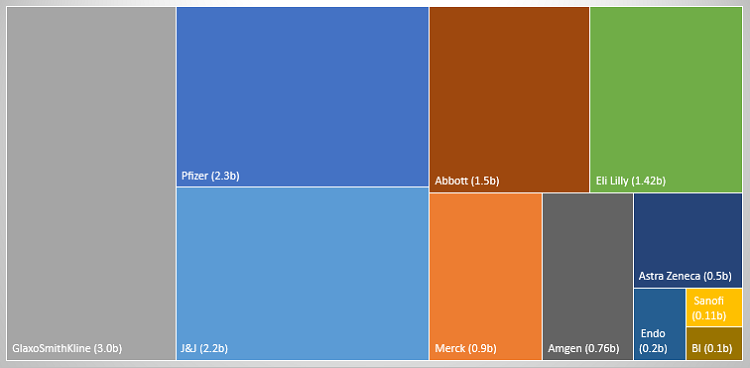Why You Need A World-Class Quality Culture — And How To Build One
By Mujtaba Ali, managing director, OCQ Solutions

An organization is considered to have a world-class quality culture when quality is embedded in its psyche and is exemplified by all the actions it takes, including the actions performed by everyone from the CEO to the frontline staff. The result of such a culture is clearly demonstrated by financial results as well as the organization’s ability to delight its customers and stakeholders.
Why Focus On World-Class Quality Culture?
Why is the quality culture of an organization important? As per Wikipedia, “Culture includes the organization’s vision, values, norms, systems, symbols, language, assumptions, beliefs, and habits.”1 Quality culture can best be explained as the “soul” of the quality system. It is the unspoken, implicit rules of communication that are never touched upon, but everybody is aware of, and it is “how” the quality system is implemented by individual employees. An example would be how employees make decisions on events that are outside the normal process.
All organizations have a quality culture that combines elements such as the stated quality vision, mission, and values, but the key in implementing an effective quality culture is the combination of top-down and bottom-up interactions that drive quality as a cultural value, including leadership emphasis, message credibility, peer involvement, and employee ownership of quality issues.2 According to a Forbes survey, 81 percent of world-class companies’ managers support Quality Vision/Values vs. 60 percent of those in non-world-class companies. This is a real differentiator for world-class organizations.3
In general, most regulated companies have a high focus on the control and compliance aspect of quality systems. Although this is essential as a starting point to build a high level, functioning quality culture, it is not the full story.
Impact Of Quality Culture On The Organization’s Bottom Line
A study conducted in 2014 by CEB (now Gartner) concluded that, “A company with a highly developed culture of quality spends, on average, $350 million less annually fixing mistakes than a company with a poorly developed quality.”4 According to a Harvard Business Review (HBR) article, the employees of a top quintile company (in terms of quality) resolved 46 percent fewer mistakes than bottom-quintile companies, which resulted in approximately $350 million a year (cumulative) potential additional cost due to errors. Along with the increase in operating costs, companies also face the potential of business loss and fines by regulatory authorities.2 For example, during the period 2009-2013, major pharma companies were fined approximately $13.05 billion by the FDA due to quality and compliance issues.
Table 1: $13.05 Billion in FDA Fines Levied Against Big Pharma, 2009-20145

Implementing World-Class Quality Culture Starts With Leadership
According to a Boston Consulting Group (BCG) article, successfully changing corporate culture requires a holistic end-to-end view. Typically, as part of this holistic view, companies have to clearly define quality values, streamline governance, enhance existing quality processes, and implement preventive quality measures.6 Both the HBR and BCG articles clearly emphasize that leadership commitment to quality is a critical factor that determines the success of this transformation.
The culture of the organization is primarily driven by executive management. It’s the executive team that determines and drives the quality values into the organization through corporate goals, the human resources appraisal process, recognition/reward structures, and team development through other means. Executive management also owns the company’s monitoring and improvement metrics.
Implementing world-class quality culture starts with the CEO and the C-level team demonstrating quality values and by effectively communicating. According to the HBR article, the CEB study found that the message had to be tailored to suit the needs of the workers. . It recognized that some workers respond best to messages emphasizing the reduced cost and hassle of producing defect-free goods, and others are inspired by an emphasis on customer satisfaction. Additionally, the messaging needs to be refreshed over time as required to keep it alive.2 Other examples where executive management can clearly drive quality culture include developing tools and “quality in action” guidelines2 for company staff that define the expected quality behaviors and priorities such as Right First Time or Be Accountable, See Something Do Something, Right to Operate, or others. These priorities allow company personnel to make quality-centric decisions in ambiguous situations. Quality and/or company management can use email, newsletters, websites, or staff meetings, but the critical success factor is a routine and consistent communication, along with reinforcing positive quality-related information.
Enhancing Quality Mind-set In People And Processes
A significant advantage of a world-class quality culture is an engaged employee base, and an engaged employee delivers high productivity and results. To develop a world-class quality culture, organizations have to ensure that core values are implemented and lived by all. This allows employees to have a clear understanding of the mission and their contributions. As the first step in this process, organizations need to enhance their training and recognition processes. The training processes should highlight the benefits and a direct link between quality and the organization’s strategic imperative, including the employee’s role in delivering the strategic imperative and the actions taken by the CEO to demonstrate quality as a key element in making decisions. The ultimate purpose of the training is to empower the employee to make effective decisions based on clear, specific quality guidelines. As part of this training process, organizations need to utilize peer to peer training and interactions, mentoring, and supervision, followed by active and frequent follow-ups. Organizations should also identify employees demonstrating world-class quality values and reward them for their contributions, including their bottom-line impact on company goals. Organizations should ensure that quality culture values are an integral part of the human resources performance review process and that all employees are evaluated on these values, along with business operational and financial results.
As part of the world-class quality initiatives, organizations should continuously innovate their quality and operational processes through process excellence tools such as process maps, 5 Whys, and others, with the intention of identifying and eliminating process inefficiencies and simplifying and streamlining processes. In a typical organization, system inefficiencies become routine policies and thus should be continuously scrutinized. Therefore, as part of the annual objectives, organizations should review select processes and optimize them on a yearly basis, with the goal that all processes are reviewed on a biannual basis. Quality processes oversight should include supplier quality, manufacturing and support systems, quality management systems, and others. Consideration should also be given to implementing automation solutions for complex issues.
Another important world-class quality initiative would be to implement a predictive view of the business through early warning indicators. Most organizations have business or quality monitoring metrics, such as inventory turnover, deviations per batch, number of complaints, employee engagement score, right first time, and others. In most cases, organizational metrics provide a lagging view of the process being monitored. For a predictive view, organizations should consider tracking the inputs for the metrics data points. Other considerations for metrics include a deep dive into the metrics results by focusing on the data being collected and not just the overall results of “met or unmet.” A Pareto analysis of each metric provides a view into the actual issue causing the effects. The metrics should also be designed to consider a cascade approach, where the chief executive’s metrics are high level and link to a business outcome, and the metrics tracked further down the chain of command review the touchpoints that ensure the performance of the high-level metrics.
Cross-functional governance is another essential aspect of world-class quality, as it provides for open and honest communication in the organization. As the quality culture develops, it is highly likely that organizational roles and responsibilities will have to adapt to the new environment. This is essential to break the silos and open the communication channels, enabling quick decision-making. The cross-functional team also fosters teamwork, which is the backbone for the development of a quality culture. In many cases, the company's success is directly connected to its suppliers; therefore, the supplier quality program should focus on these actions where possible. Examples of cross-functional teams are the Quality Council, Risk Committee, and others
Conclusion
As we move forward in 2020, the business climate will continue to be competitive, and a key deciding factor for the customer is the quality of the product. The quality culture of the organization has a clear and direct impact on the ultimate quality of the product, where either the quality is built into the product or is tested against the product for acceptance. Therefore, an organization with an employee base that engrains quality as a core value will excel and have a significant competitive lead. In the article, we discussed several ideas for implementing a quality culture that is based on innovation while ensuring compliance with regulations. To successfully achieve a quality culture, the initial steps and focus are the C-suite’s responsibility. At its core, the world-class quality culture empowers employees by providing a framework that can be used to remove obstacles and improve the effectiveness of their work, thereby enhancing their engagement and delivering record business results.
References:
- https://en.wikiquote.org/wiki/Organizational_culture
- https://hbr.org/2014/04/creating-a-culture-of-quality
- https://www.forbes.com/forbesinsights/asq_v4/
- http://www.businessofgovernment.org/blog/how-embed-quality-your-organizations-culture
- https://projects.propublica.org/graphics/bigpharma
- https://www.bcg.com/publications/2018/how-to-create-culture-quality-improvement.aspx
About The Author:
 Mujtaba Ali is the managing director of OCQ Solutions, a consulting organization based in Southern California. Over the last 30 years, Ali has held director and VP positions leading technical operations, validation, and quality organizations in biotech, pharma, and cell therapy companies for investigational and commercial products. His expertise includes operational, compliance, and quality best practices in building a quality culture, phase-appropriate quality systems, health authority inspections, program and project management, operational quality oversight, supplier quality oversight, technical transfer, operations implementation, and optimizing and enhancing existing business practices. You can contact Ali at OCQSolutions@gmail.com or Genentech.Mujtaba.Ali@gmail.com, or connect with him on LinkedIn.
Mujtaba Ali is the managing director of OCQ Solutions, a consulting organization based in Southern California. Over the last 30 years, Ali has held director and VP positions leading technical operations, validation, and quality organizations in biotech, pharma, and cell therapy companies for investigational and commercial products. His expertise includes operational, compliance, and quality best practices in building a quality culture, phase-appropriate quality systems, health authority inspections, program and project management, operational quality oversight, supplier quality oversight, technical transfer, operations implementation, and optimizing and enhancing existing business practices. You can contact Ali at OCQSolutions@gmail.com or Genentech.Mujtaba.Ali@gmail.com, or connect with him on LinkedIn.
